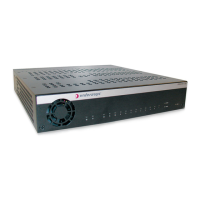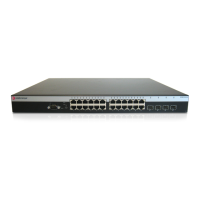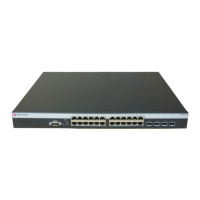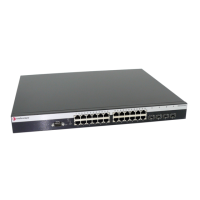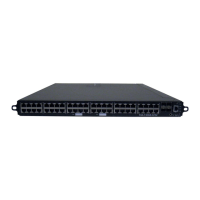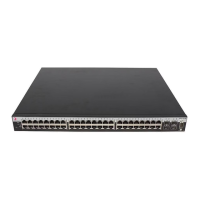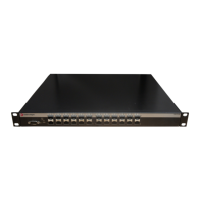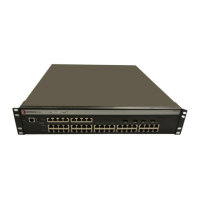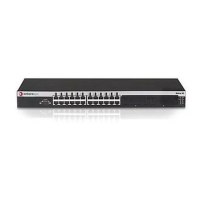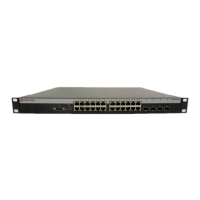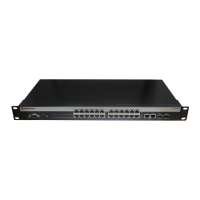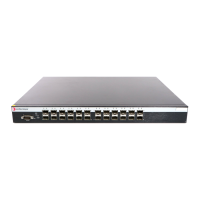Connecting the Relays
2-22 Installation
Connecting the Relays
There are two fault relays, a primary and a secondary. The primary relay can be used to monitor
the power supply and a software-configurable selection. The secondary relay does not monitor
power. It must be configured by the software, as described in the Enterasys I-Series CLI Reference
Guide.
Each relay has two contacts, where contact 2 is on the side that opens when a fault is detected. By
default, both relays are in a closed state and open when an alarm is present. Both alarm relays can
be changed to an open state and closed when an alarm is present. For more information about
changing the alarm relays from normally closed to normally open, see “Changing Alarm Relays
from Normally Closed to Normally Open” on page 2-6.
Ensure the equipment that is to be attached to the relays falls within the range of the relay
specifications, as provided in “IOM Port Specifications” on page A-3.
You must use 14 to 20 AWG solid copper wire for all ground, power, and relay connections.
Refer to Figure 2-18 as you perform the following procedure.
To connect your alarm system to the relays:
1. Make sure the wires (14 to 20 AWG solid copper, customer-provided) are stripped to 0.25 inch
(6.3 mm) +
0.02 inch (0.5 mm). Stripping more can leave exposed wire from the connector.
2. Insert the wire into the primary relay contact 1 (right side), as shown in Figure 2-18. Turn the
screw to secure the wire.
3. Repeat for contact 2 (left side).
4. Repeat the previous steps for the secondary relay.
Warning: Do not connect or disconnect any connections while circuit is live, unless area is known
to be non-hazardous. Secure any external connections that mate to this equipment by using the
screws, safety bars, or other means provided with this equipment.
Advertencia: No conecte ni desconecte ninguna conexión mientras el circuito tenga corriente, a
menos que esté seguro de que el área no es peligrosa. Asegure cualquier conexión externa que se
una a este equipo usando tornillos, barras de seguridad u otros medios que se proporcionen con el
mismo.
Warnhinweis: Ist der Stromkreis in Betrieb dürfen keine Verbindungen getrennt oder hergestellt
werden, es sei denn, die Umgebung gilt als ungefährlich. Alle externen Verbindungen zu diesem
Gerät müssen mithilfe von Schrauben, Sicherheitsvorrichtungen o. ä. gesichert werden.
Electrical Hazard: The device must be disconnected from its power source to prevent electric
shock.
Riesgo electrico: El dispositivo debe ser desconectado de la corriente electrica para prevenir
algun choque electrico.
Elektrischer Gefahrenhinweis: Das Gerät muss von der Stromzufuhr getrennt sein, um den
Schutz vor Stromschlägen gewährleisten zu können.
